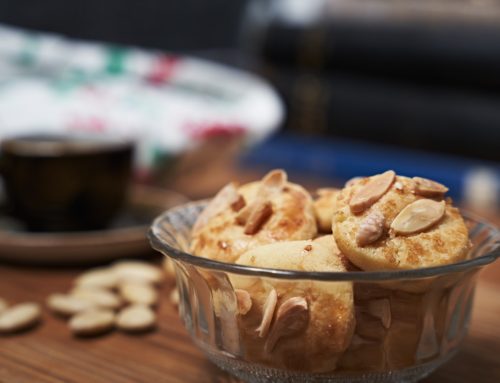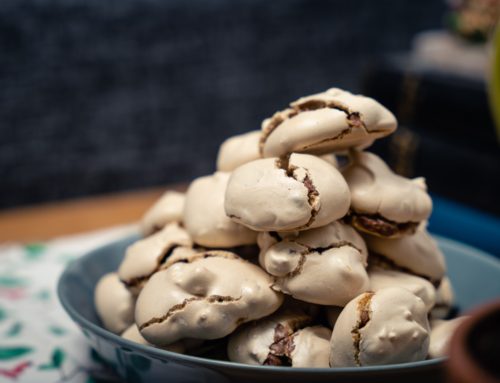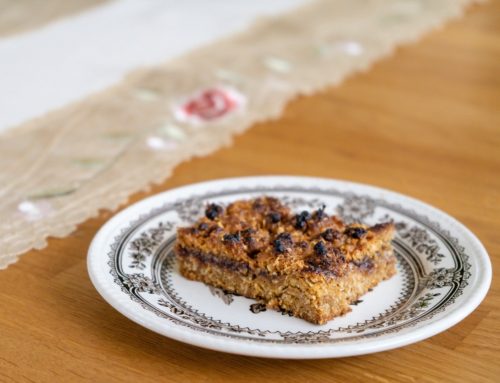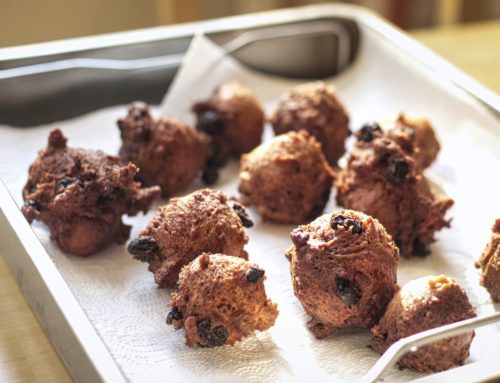Kleinur
First things first. Kleinur is the plural, kleina singular. Got it? Good. How to pronounce it? No, I’d like to see you try and make a complete fool of yourself.
If you’ve ever been to Iceland you’ve probably seen a strange knot of a fried dough called kleinur. They’re ubiquitous; you’ll find them in bakeries, grocery stores, gas stations, cafés, restaurants, and on Sundays, you might find them freshly fried at homes. They’re a staple.
In many ways kleinur may remind you of a doughnut, it’s a deep fried sweet bread, not sweetbread, dear. Thus often called “twisted doughnut” by bakeries. But there is a difference. If you’re expecting similar taste and texture you’ll be disappointed. Kleinur are more dense and bready and not as sweet, usually with a hint of cardamom or/and vanilla, and you’d be hard pressed to find kleinur with any sort of glaze on it.
Speaking of glaze, or a lack thereof, you might find kleinur with hard chocolate shell or, on rare occasion, with caramel or powdered sugar. In 98% of the case, it hasn’t got anything on it, just kleina in its pure, unadulterated form. In fact, I’ve never seen kleina, with the exception hard chocolate shell, with anything on them IRL, only on some chic Instagram accounts or blogs.
A kleina is a kleina is a kleina.
So all kleinur are the same? No, not at all! They vary in both tasted and texture. I’d like to present the three kleinur theory:
- The bakery kleina. Big, thick and deep dark brown, with a crispy exterior and rich yellowish inside with a cardamom taste. You’ll also find them at cafés.
- The grocery store kleina. Comes in a pack of ten, light brown, often quite soft outside with drier inside then the bakery kind and smaller.
- The home baked kleina. Depends on the person who bakes them but, drawing from personal experience, it’s usually somewhere between the bakery and grocery kleina. Sometimes it’ll even have caraway seeds in them.
So what’s the best? If it’s freshly fried, nothing beats a homemade kleina, especially if it’s your moms or grandmas, because, you know, nostalgia. However bakery-made kleinur would be considered the most delicious. The grocery stores are fine if you’re on the road or need a few in the pantry. So, not that great.
So kleina is icelandic?
No.
You can find similar things in the Nordic countries. Heck, even the name is similar. In Denmark, it’s called klejne and in Sweden it’s klenäter. Norwegians call them fattigman, though. The difference, however, is in the ubiquitousness (trust me, it’s a word) of it in Iceland. Usually a Christmas food in Scandinavia, it’s ever-present in Iceland.
Any other example of kleinur around the world?
It turns out that they are quite a lot of pastries that are like kleinur. Usually eaten before Lent. See:
- Xрушчы (chruščy) or фаворкі (favorki) in Belarus.
- Фаворки in Bulgaria.
- Calzones rotos in Chile.
- Boží milosti in Czech.
- Krostole in Croatia.
- Bugnes and merveilles in France.
- Raderkuchen or Mutzenblätter in Germany.
- Csöröge fánk in Hungary.
- Bugìe, cénci, chiàcchiere, cròstoli, fràppe, galàni, gróstoli and sfràppole in Italy.
- Žagarėliai in Lithuania.
- Xkunvat Malta.
- Faworki, chruścik, chruściki, chrust and chrusty in Poland.
- Orelha de gato, cueca virada, filhós, coscorão, cavaquinho in Portugal.
- Minciunele and uscatele in Romania.
- Хворост (khvorost).
- Flancati in Slovenia.
- Fánka in Slovakia.
- Pestiños in Spain.
- вергуни in Ukraine.
- Angel wings in the United States.
- חרוסט in Yiddish.
Recipe
INGREDIENTS
- *500gr. all-purpose flour
- 175gr. granulated sugar
- 50gr. cold butter
- 1 egg
- 1 tsp. baking Powder
- 1 tsp. bicarbonate of soda
- ½ tsp. sea salt
- 250ml. kefir
- 1 tsp. essence of vanilla
- 1/2 tsp. essence of cardamom*
- 2lt. deep frying oil of own choice (We used vegetable oil)
Very often people double, triple, quadruple or uhh fivuple the Kleinu-recipe as they freeze well!
*Optional, But recommended.
METHOD
Mix the dry ingredients. Cube down the cold butter (or you can cut them in to rectangles or triangles… We’re not here to judge, you philistine!) and combine them to a finely grained mixture with your hands or pulse it in a food processor and then mix the wet ingredients.
Combine all the ingredients and stir until it forms a shaggy dough, then get in there and knead it with your hands until it forms a homogenous mass. Continue kneading on a well-floured surface, sprinkling flour as needed until it’s smooth and springs back. At this point it’s important to let it rest for around 30 minutes at room temperature – If you skip this step the kleinur will have a denser bready texture.
Once the dough has rested it’s time to roll it out. If you’ve doubled the recipe (or find it unwieldy) you can just cut the dough in half before rolling it out. It needs to be flattened out to around 5mm (¼”) and cut into diamond shapes. Cut a thin slit into the middle of the shape and pull one end under and through the whole forming the unmistakable shape of the ubiquitous Kleina! Repeat and rinse until you have a bunch of Kleinur!
In a large pot heat your frying oil to 180c (350f) and carefully drop them in, frying for about a minute and a half each side or until it has reached a golden brown colour. Transfer on a cooling rack and enjoy by dipping into milk, coffee or just straight up. The perfect everyday treat!
p.s. it’s clay-nah or clay-nuhrr with a rolling r.




